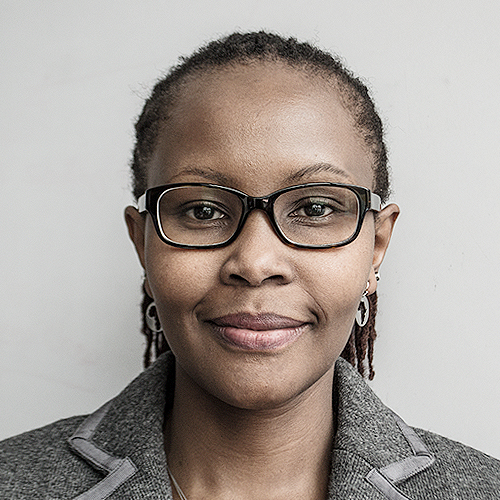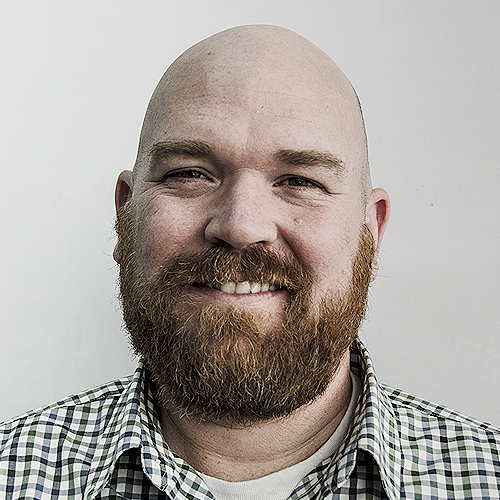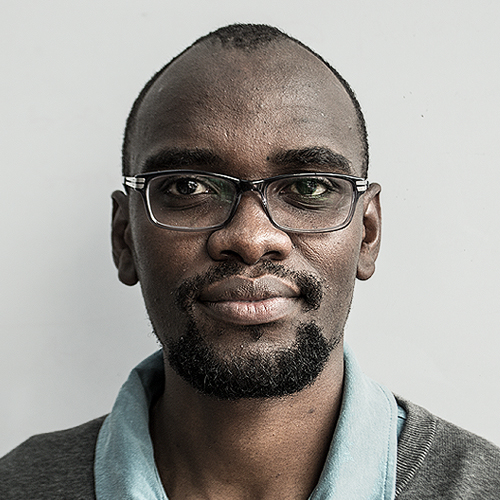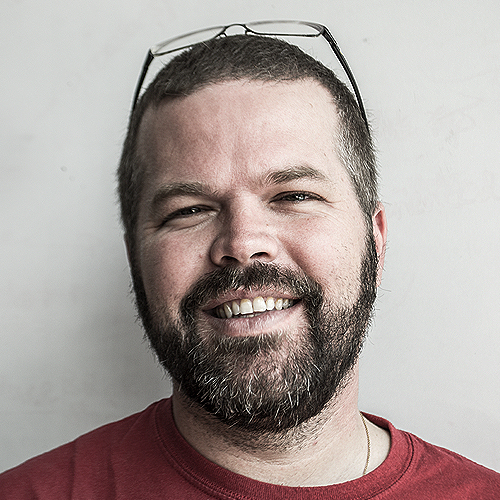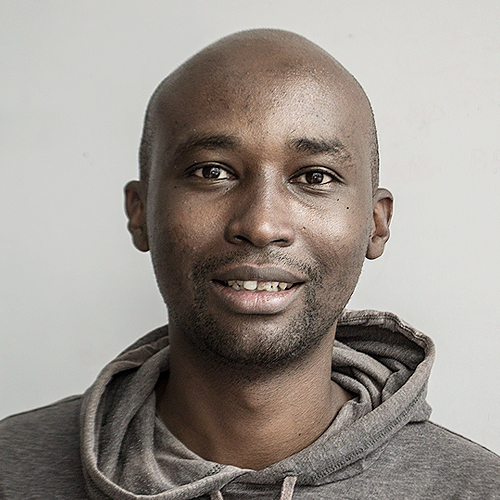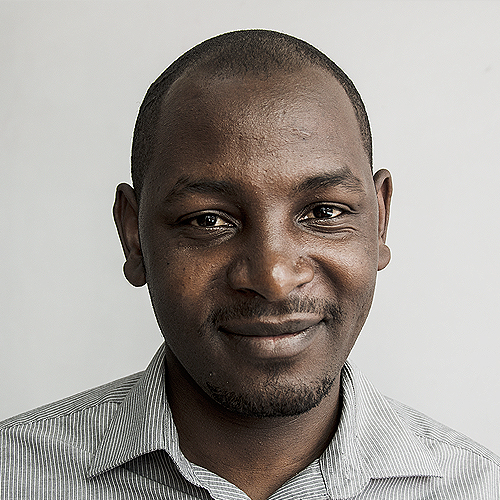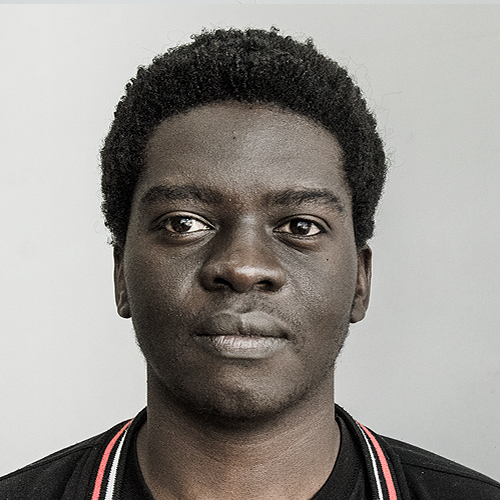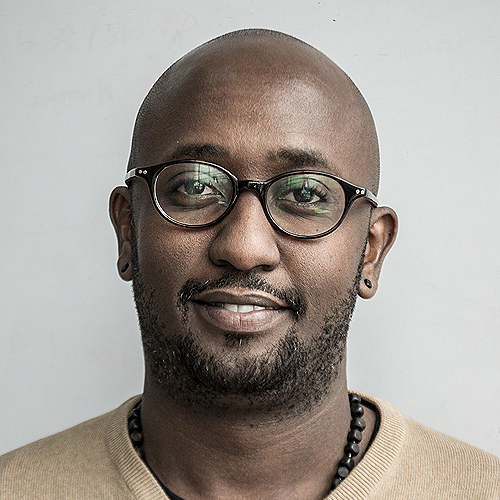IS IT POSSIBLE ?

Low-tech smarts
Entrepreneurs cast a fresh eye on some old problems
BY S. A. SWANSON
Entrepreneurs cast a fresh eye on some old problems
BY S. A. SWANSON
Solar disinfection is not new - researchers discovered its effectiveness about 30 years ago. But if it's so easy, why isn't it
more widespread?" The problem is; it's so simple, people don't think it's going to work," says Charlie Matlack, a doctoral
student in electrical engineering at the University of Washington. Matlack is also president of Pota Vida, a start-up that aims
to increase the use of this process.
He designed an inexpensive device, the Pota Vida, that attaches to bottles. The small solar- powered circuit measures how
much light comes through the bottle, and it has an LED indicator to monitor the disinfection process. "It's like using the guts
that you would find in a solar- powered calculator," he says.
Matlack and his team are still refining Pota Vida's design so people will know how to - and want to - use the device. A team
member brought a mechanical mock-up to Nicaragua last summer and found that local residents had questions of their
own. "People want to know, 'Does it make me look rich, do people want to steal it, does it fit in culturally:" Matlack says.
"Ir's critical," he notes, "to not get too focused on a technological feature that you think will solve the problem."
In many places, the simplest needs - clean water, efficient sanitation, sterile medical equipment - can he the most difficult
to meet. Take a look at three start-ups that have embraced practical designs that cater to people without reliable access to
electricity and other infrastructure, offering smart yet low-tech solutions to high-stakes problems.
SANERGY
Based in Nairobi, Kenya, Sanergy is tackling sanitation issues in developing nations with a multi step approach: building a
network of clean toilets, finding local entrepreneurs to manage them, collecting the waste, and converting it to fertilizer that
can then be sold.
"In the slums, it's common for people to pay 3 to 5 shillings [about 3 to 5 cents, in US. dollars) per toilet use - even for pit
latrines," says David Auerbach, a Sanergy co founder who graduated from the Sloan School of Management at the
Massachusetts Institute of Technology. The entrepreneurs who operate Sanergy's toilets (under the brand name Fresh Life)
will continue to charge a fee, but toilet users will enjoy a more hygienic experience.
Unlike pit latrines, Fresh Life toilets will be emptied daily and offer toilet paper and hand-washing facilities.
Cleanliness wasn't the only requirement for the Fresh Life toilet's design. The team knew it had to be inexpensive and
compact. ("Space comes at a premium in a slum," Auerbach notes.) In 2010, Sanergy installed two prototype toilets, which
cost less than $200 each to construct, in Nairobi's Mukuru slum. The company has trained people to work as Fresh Life
franchisees, and Auerbach expected that by now, it would be building 60 toilets in Nairobi to serve 5,000 residents.
Sanergy received the grand prize in MIT's $ lOO K Business Plan Competition last year, along with the $5,000 Audience
Choice Award. It also won the $12,500 grand prize in the University of Washington's Global Social Entrepreneurship
Competition as well as that competition's prize for social impact, worth $1,000. To be eligible for that award. Sanergy's
founders met with the Rotary clubs of Nairobi Park-lands and Cambridge, Mass., USA, which led to an unexpected benefit:
Anju Paunrana, a member of the Nairobi Park-lands club, works in her family's mining business, which has a cement
division. "We've been able to buy cement at wholesale prices, even though we're quite a small operation," Auerbach says.
Though he's happy about the awards, Auerbach knows that the people who use Fresh Life toilets will decide whether
Sanergy succeeds. So the company is also working on a better way to dean out pit latrines, which can be up to 13 feet
deep; waste is often scooped out with shovels and buckets, an unpleasant task. Sanergy is testing a bicycle-powered
pump that would suck the waste out of the law~ "Our goal is to take people who operate pit latrines and convert them into
Sanergy toilet operators," Auerbach says. "But in the meantime, we need to show them the value of what we're doing. And
part of that is if you have a cleaner latrine, you'll have more customers,"
SOLAR CLAVE
In rural areas, sterilizing medical instruments can be difficult because an autoclave requires a reliable source of electricity.
"They're so energy intensive that it's nor practical to run them on a generator,· says Anna Young, research and
development officer for International Laboratories of Innovations in International Health at MIT.
Two years ago, Young joined forces with electrical engineer Ted Liao at MIT to design Solar clave, a solar-powered
autoclave. It's essentially a modified 4-liter pressure cooker insulated with fiberglass and covered by a bucket. Dozens of
small mirrors angle toward the base of the vessel, which is painted black to help it absorb heat. After' 30 to 60 minutes, the
Solar clave reaches 121 degrees Celsius, the sterilization temperature recommended by the US. Centers for Disease
Control and Prevention. From there, the Solar clave can sterilize instruments in 20 minutes.
If a mirror breaks, health-clinic workers can make a replacement by covering a piece of glass with Mylar from the inside of
chip bags. It won't be as efficient as a mirror, but it will work, Young says. The ability to carry out their own repairs, however
MacGyver like, makes workers more comfortable with Solar clave, she says, which is essential in places where
mechanical problems often doom high-tech devices: "One screw falls off, and everyone is afraid to touch it. It becomes part
of an equipment graveyard."
POTAVIOA
The sun can also help purify the most basic necessity: water. All you need for solar water disinfection, known as SODIS, is
a transparent bottle made of PET plastic (the material used for most disposable beverage containers). Fill the bottle with
water, leave it in direct sunlight for at least six hours, and the one-two punch of UVA rays and heat will destroy harmful
bacteria. Studies show that when used to purify drinking water, this process can significantly reduce the occurrence of
diarrhea. That will have a profound effect: Diarrhea results in more than two million deaths each year.
S. A. Swanson writes about science, health, and technology. Her work has appeared ill publications including Chicago magazine and
ScientificAmerican.com.
Embrace Foundation is a non-profit,
educational foundation set up to create
better understanding between people of
different religions, cultures, traditions and
world philosophies.
Embrace Foundation works to bring leaders
and scholars of world-wide religions,
cultures and philosophies together by
sponsoring forums, seminars, lectures and
developing an international exchange
program. Embrace Foundation is particularly
concerned with reaching the world public
through the media.
Purpose
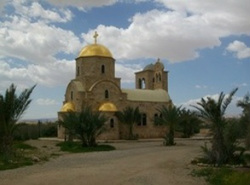
Donations
Embrace Foundation is an all volunteer
organization. All donations go directly to
programs.
Embrace Foundation does not and has
never given permission to any outside
organization to solicit or receive
contributions on our behalf.
All donations should be made to Embrace
Foundation only via Paypal or by mail. All
donations are tax deductible. A receipt will
be emailed to you. Please click on the Pay
Pal link below to Donate.

Travel As An Interfaith Act
Embrace encourages all who can do so, to
learn about other traditions and cultures by
traveling as “Grassroots Diplomats.” We
hope that people every where become life
long students of our world-wide humanity.
“ In every man there is something wherein I
may learn of him, and in that I am his pupil.”
R.W.Emerson
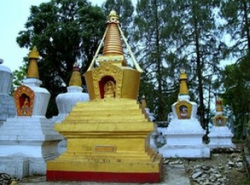

Embrace Humanity

Great Visions - TV
Guests are: Swami Satchidananda &
the Rt. Reverend Dean Parks Morton
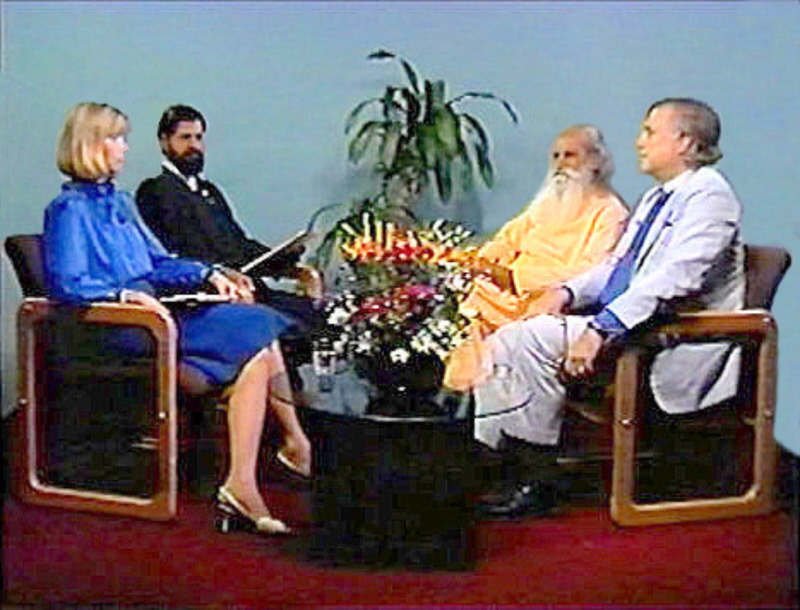
Thank you for making a donation.
Innovative Technology
Embrace Foundation International
BRCK, a portable Wi-Fi router and a backup power generator for the internet, is expected to alleviate problems that African
Internet users face daily such as high communication costs and unreliable electricity.
Ushahidi, a not-for-profit technology company based in Kenya, has invented a cloud-managed, portable Wi-Fi router that
consists of a mobile modem, which can also be used as a backup power generator for the Internet during electricity
blackouts or in situations of limited network coverage.
Out of adversity can come innovation.
Called BRCK (pronounced as "brick"), experts are already recognising it as an ingenious solution to Africa's intractable
power problems. The BRCK is rugged and water-proof and compatible with any device that requires between 3 and 17
volts power supply. It weighs 510 grammes and it is ideal for use in particularly rural areas. It can be charged on readily
available power sources such as a car battery or a solar panel. When the electricity goes off, BRCK automatically switches
to battery mode, which can then last for eight hours.
In addition, currently available modems in Africa don't meet local needs. They are designed primarily for use in more
developed regions, particularly the West and Asia, where there is mostly uninterrupted access to electricity and Internet.
The gadget can switch between Ethernet, Wi-Fi and mobile broadband connections, and
http://www.ushahidi.com/product/brck/ deliver connectivity for up to 20 devices at the same time through multiple sim
cards, thereby allowing users to stay connected at a relatively low cost.
Ushahidi is optimistic about the device's potential to help small business owners in Kenya and other parts of Africa.
"Out of adversity can come innovation," said Juliana Rotich, Ushahidi's executive director, at a presentation at the TED
Global Conference in Scotland last year. Rotich emphasized the importance of connectivity and entrepreneurship for
Africa's digital economy, and highlighted the BRCK's role in keeping Africans connected. Last July, BRCK's creators were
invited by eLimu, a Kenyan tech company, to consider delivering an e-learning to schools in remote locations. The BRCK
has also been stress-tested successfully in rural Kenya and during the Rhino Charge, an annual off-road motorsport
competition.
Launched last July in Nairobi, each BRCK sells for $199. Africa's ongoing information and communication technology (ICT)
transformation makes BRCK a potentially popular device.
Ushahidi (meaning "testimony" or "witness" in Swahili) was originally founded in 2008 as a website to map reports of
violence in Kenya in the aftermath of the disputed 2007 presidential election.
Since then, the company has evolved into a leader of the technology community in East Africa.
From the above article information taken from Ushahidi's own website below.
Note: From the Editors - Even in the rural USA getting internet and getting efficient and reasonably priced internet is not always easy. We
believe internet opens doors for many business opportunities for farmers, entrepreneurs and small businesses. A two-way open internet
also enables either self-education, or traditional education with access to language translation programs offered freely and the proliferation
of free on-line classes in many, many subjects. This is critical given the difficulties of establishing publishing companies in the
numerous languages even within one country, particularly in Africa and Asia; the distribution of text books where needed and the cost of
buying textbooks for a very, very large number of families
_______________________________________________________________________________
THE NEW AFRICA
A Non-Profit, Open Source Tech Company
Ushahidi
We’re a team of software developers, engineers and technologists who are from Africa and live here. We have a long history of building
things, such as Ushahidi, Crowdmap and the iHub. Our expertise runs from cloud software to fingerprint scanners for mobile devices to
high-level medical device prototyping and manufacturing.
The BRCK was designed and prototyped in Nairobi, Kenya. We wanted a connectivity device that fit our needs, where electricity and
internet connections are problematic both in urban and rural areas.
As we laid out what such a device would look like - physically robust, able to connect to multiple networks, a hub for all local devices,
enough backup power to survive a blackout - we realized that the way the entire world is connecting to the web is changing. We no longer
only get online via desktops in our office with an ethernet connection, we have multiple devices, and mobile connectivity is crucial.
AFRICA - Kenya
Technology: An Internet connection that blocks power cuts
By Ying M. Zhao-Hiemann
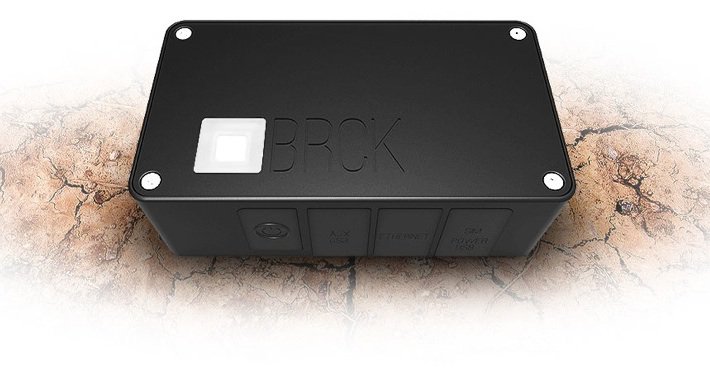
Courtesy photo©http://www.brck.com/
The Team - Ushahidi
- Great Visions TV
- Inspirations
- Media
- Possibilities
- Astrophysics, Quantum Physics & The Nature of Reality
- Deconstructing Nuclear Fission & Nuclear Waste
- Defense Industry as Community Builders
- Defense Industry As Energy Providers
- Global Water Shortages
- Innovative Technology
- Intelligent Communities & Development
- Pentagon & Non-Western Nations
- Recreating
- Resource Based Population
- Sharing Community Resources
- Protecting Human Rights
- Spiritual Ecology
- Syria
- Write to Us
Bacteria-powered solar cell converts light to energy, even under overcast skies
Date: July 5, 2018
Source: University of British Columbia
Summary:
Researchers have found a cheap, sustainable way to build a solar cell using bacteria that convert light to energy. Their cell
generated a current stronger than any previously recorded from such a device, and worked as efficiently in dim light as in
bright light. This innovation could be a step toward wider adoption of solar power in places like British Columbia and parts of
northern Europe where overcast skies are common.
Using bacteria that convert light to energy could be a step toward wider adoption of solar power in places where overcast skies are common. Credit: ©
FotoAndalucia / Fotolia
University of British Columbia researchers have found a cheap, sustainable way to build a solar cell using bacteria that
convert light to energy.
Their cell generated a current stronger than any previously recorded from such a device, and worked as efficiently in dim
light as in bright light.
This innovation could be a step toward wider adoption of solar power in places like British Columbia and parts of northern
Europe where overcast skies are common. With further development, these solar cells -- called "biogenic" because they
are made of living organisms -- could become as efficient as the synthetic cells used in conventional solar panels.
"Our solution to a uniquely B.C. problem is a significant step toward making solar energy more economical," said
Vikramaditya Yadav, a professor in UBC's department of chemical and biological engineering who led the project.
Solar cells are the building blocks of solar panels. They do the work of converting light into electrical current. Previous
efforts to build biogenic solar cells have focused on extracting the natural dye that bacteria use for photosynthesis. It's a
costly and complex process that involves toxic solvents and can cause the dye to degrade.
The UBC researchers' solution was to leave the dye in the bacteria. They genetically engineered E. coli to produce large
amounts of lycopene -- a dye that gives tomatoes their red-orange colour and is particularly effective at harvesting light for
conversion to energy. The researchers coated the bacteria with a mineral that could act as a semiconductor, and applied
the mixture to a glass surface.
With the coated glass acting as an anode at one end of their cell, they generated a current density of 0.686 milliamps per
square centimetre -- an improvement on the 0.362 achieved by others in the field.
"We recorded the highest current density for a biogenic solar cell," said Yadav. "These hybrid materials that we are
developing can be manufactured economically and sustainably, and, with sufficient optimization, could perform at
comparable efficiencies as conventional solar cells."
The cost savings are difficult to estimate, but Yadav believes the process reduces the cost of dye production to about one-
tenth of what it would be otherwise. The holy grail, Yadav said, would be finding a process that doesn't kill the bacteria, so
they can produce dye indefinitely.
He added that there are other potential applications for these biogenic materials in mining, deep-sea exploration and other
low-light environments.
Story Source:
Materials provided by University of British Columbia. Note: Content may be edited for style and length.
Journal Reference:
Sarvesh Kumar Srivastava, Przemyslaw Piwek, Sonal R. Ayakar, Arman Bonakdarpour, David P. Wilkinson, Vikramaditya G. Yadav. A
Biogenic Photovoltaic Material. Small, 2018; 14 (26): 1800729 DOI: 10.1002/smll.201800729
Cite This Page:
MLA APA Chicago
University of British Columbia. "Bacteria-powered solar cell converts light to energy, even under overcast skies." ScienceDaily.
ScienceDaily, 5 July 2018.
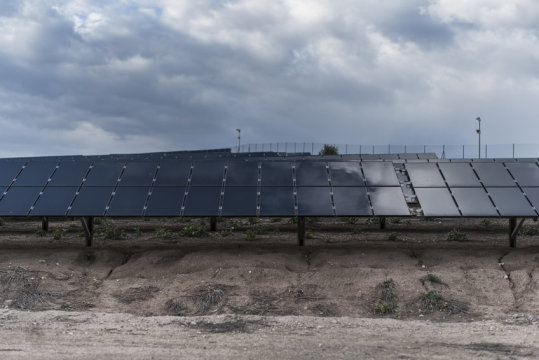

Embrace Foundation Retreat Center
Embrace.Foundation (skype messaging) - 011+1+212.675.4500 (New York)
Click to Email Us

